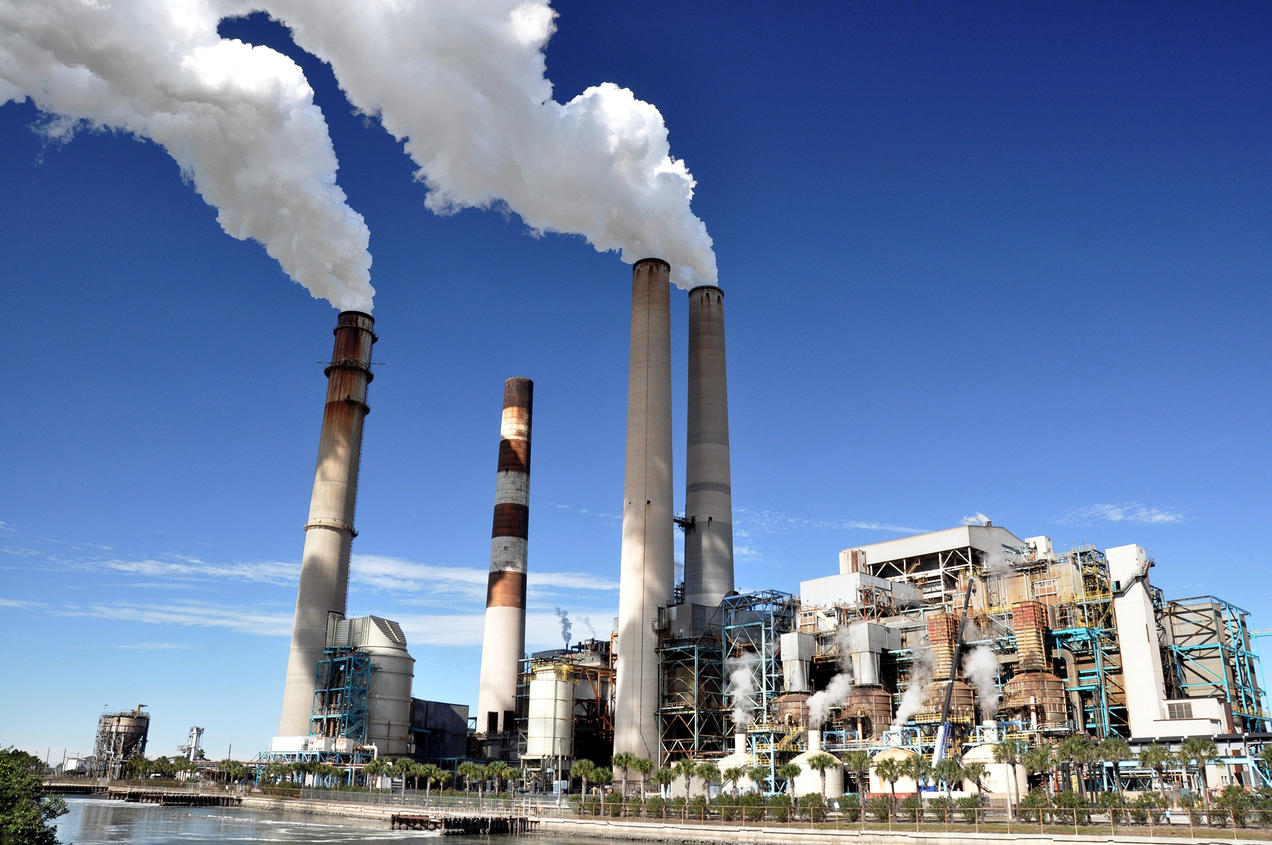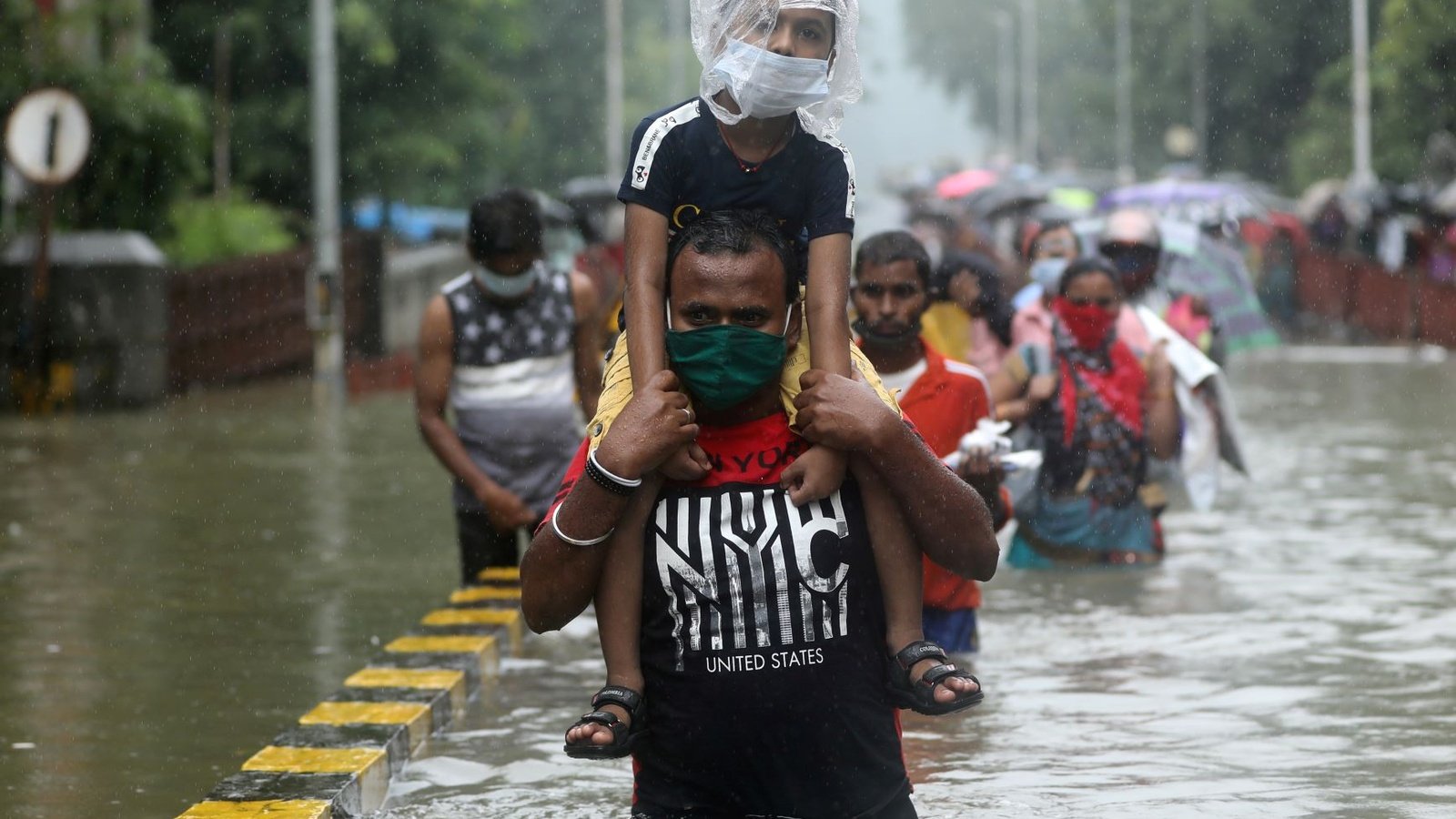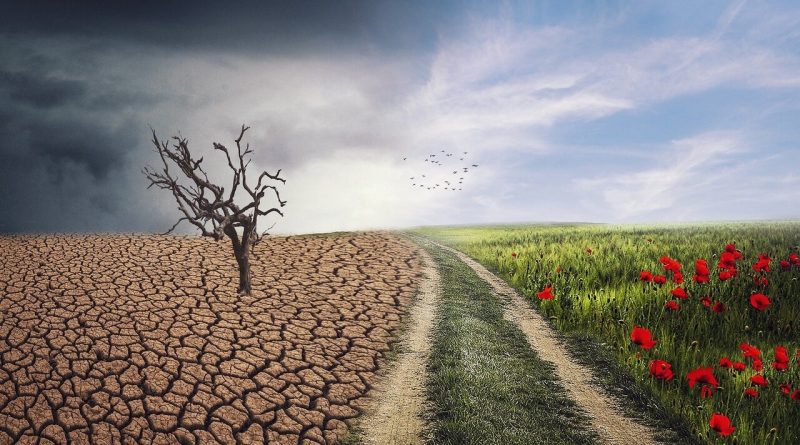Impact of Extreme Weather Events
 Warmer climate along with higher CO2 promote plant growth increasing outdoor aeroallergens. Pollen season may start earlier and lasting longer. This can predispose to allergic rhinitis, asthma and allergic skin conditions…..
Warmer climate along with higher CO2 promote plant growth increasing outdoor aeroallergens. Pollen season may start earlier and lasting longer. This can predispose to allergic rhinitis, asthma and allergic skin conditions…..
By Dr Amitav Banerjee
Currently India, like most part of the world, had its share of extreme weather events as defined by the Intergovernmental Panel on Climate Change (IPCC), are those that are “rare for the particular place and time of the year. According to a report by Centre for Science and Environment (CSE), the country witnessed extreme weather events on 242 days between January and September, making them rare no longer! On a more pragmatic note, the Indian Meteorological Department, classifies extreme weather events as, “lightning and thunderstorm, extremely heavy rainfall, landslide and floods, cold wave, heat wave, cyclones, snowfall, dust and sandstorm, squalls, hailstorms, and gales.”
Last year India, had the seventh wettest January since 1901, while March 2022 was the warmest ever and third driest in the past 121 years. The country also experienced the third warmest April, eleventh warmest August, and eighth warmest September since 1901.
In the year 2022, these extreme events claimed 2,755 lives, affected almost 2 million hectares of agricultural land, destroyed over 4 lacs houses and killed 70,000 livestock. Heat wave claimed 45 lives in 2022.
The increasing frequency of extreme weather events are portent of things to come. To mitigate and cope with such events we need an understanding of the dynamics of climate change over the centuries.

Global Warming: The Price of the Industrial Revolution.
The Industrial Revolution which originated in Great Britain in the 18th century was a turning point in the history of climate change. The changes which continued incrementally since then include increasing levels of atmospheric carbon dioxide (CO2), methane (CH4) and nitrous oxide (N2O). These gases exceed the highest levels estimated over the past 800,000 years. The concentration of CO2, the most significant of the greenhouse gases, has increased by almost 35% since the Industrial Revolution, with high acceleration during the past two decades. Greenhouse gases heat the earth by absorbing and re-emitting infrared radiation towards the lower layers of the atmosphere near the earth’s surface. From the mid-nineteenth century to the present, the global mean temperature increased by 0.85◦C which is expected to rise between 1.5◦C and 4◦C by the turn of this century. The rate of increase in global temperature is more rapid now than ever in the history of climate.
Cascade of Climate Change
Global warming as a consequence of increase in greenhouse gases triggers a chain of events which are responsible for extreme weather events. Due to higher temperature, moisture from the soil evaporates which has potential to precipitate severe draught. Warm air in the atmosphere holds more moisture compared to cool air which can trigger heavy rains leading to floods. Extreme events, draughts and floods have profound public health impact. Global warming also melts the Arctic and Antarctic ice caps leading to rise in ocean levels and altering the flow of ocean currents. According to the IPCC, sea level will rise between 26 and 98 cm by the turn of this century.
Public Health Consequences of Climate Change
The demography, ecology, biocenose and geography play an important role in the vulnerability of populations to climate change. High risk populations are those residing in areas of high endemicity of communicable diseases which are sensitive to climate change for e.g., malaria and other vector borne diseases. Populations residing in coastal regions and flood prone areas also face frequent threats from the consequences of extreme weather events. Food production can be adversely affected. Climate change affects crop and livestock production and viability of the fisheries industry.
Direct Effects on Human Health
Weather events such as extremes of both hot and cold can have impact on morbidity and mortality from endemic diseases. The association between temperature and health impact is curvilinear with steeper impact at extreme temperatures. Such extremes have become more frequent. Events which used to occur once in 20 years now occur every 2-4 years. Similarly, heat waves are occurring quite frequently in the Northern Hemisphere as well. In 2003, heat wave killed more than 40,000 people in two weeks in Europe. In Russia, heat wave killed 15,000 people in 2010. At the same time trends indicate a slight reduction in deaths due to extreme cold. However, the relatively milder cold seasons are not likely to offset the more severe health consequences of hot summers.
 Official statistics after each major event are gross underestimation of the impact on health, loss of lives and property. These only report the immediate and direct losses and do not capture the insidious effects on health and wellbeing. We also do not know the full impact of extreme temperatures on people with co-morbidities, on medications, and the very young and the very old with suboptimal thermoregulation compromising the body’s capacity to maintain normal body temperature.
Official statistics after each major event are gross underestimation of the impact on health, loss of lives and property. These only report the immediate and direct losses and do not capture the insidious effects on health and wellbeing. We also do not know the full impact of extreme temperatures on people with co-morbidities, on medications, and the very young and the very old with suboptimal thermoregulation compromising the body’s capacity to maintain normal body temperature.
When an individual is exposed to extreme heat, blood flow diverts from deep organs to the skin surface to cool the body. In case of failure of thermoregulation capacity due to dehydration, older age, medications, co-morbidities, etc too much diversion of blood from vital organs like the heart and lung can contribute to severe ill health or fatality.
Urban people face more heat exposure due to “urban heat island effect.” Urban areas are warmer than surrounding rural regions. The land surfaces and concrete buildings absorb heat during the day and release it during the night. Temperature variability leads to negative health impact.
Extreme weather conditions also trigger environmental factors which may increase density of vectors of disease, cause water scarcity or contamination precipitating outbreaks of vector and water borne diseases. Extreme low humidity can lead to dry eyes and drying of the respiratory passages making people more susceptible to viral and bacterial infections. Such weather conditions also aggravate skin conditions like atopic dermatitis.
Warmer climate along with higher CO2 promote plant growth increasing outdoor aeroallergens. Pollen season may start earlier and lasting longer. This can predispose to allergic rhinitis, asthma and allergic skin conditions.
Particularly in tropical countries like India, warm weather condition has impact on vector borne diseases. Mosquito borne diseases such as malaria, dengue, chikungunya fever, Japanese Encephalitis, are endemic in the country. Prolonged hot weather interspersed with rains can increase mosquito densities leading to outbreaks.
Food borne outbreaks are also commoner in warmer temperatures as warmer temperatures promote multiplication of pathogens.
While due to the increasing attention to global warming, health impact of warmer temperatures have gained more attention, extreme cold waves though fewer in number can be more deleterious to health. Extreme cold impairs the body’s thermoregulation and can cause death by hypothermia. The range of harmful health effects range from frostbite, hypothermia, cardiac arrhythmias, cardiac arrest, and decreased cerebral circulation. Like vulnerability to heat, cold effects also depend on age, socioeconomic status and geographical location.
Natural Disasters Triggered by Climate Change and its health impact.
In the past decades millions of lives have been lost to extreme floods, storms, tropical cyclones, landslides and droughts. Particularly in less developed parts of the world like India, such disasters can lead to large scale population migrations often to poorly equipped shelters. Such refugee populations are vulnerable to spread of communicable diseases and malnutrition. Measles outbreaks with its cycle of infection and malnutrition are very common among children in such situations. Child deaths are common, besides sexual exploitation, violence and mental health disorders.
The Ethics of Climate Change
Nations contributing the bulk of greenhouse gases with highest per capita emission rates account for a small proportion of the world population. The United States with 5% of the world population, produces 25% of total annual greenhouse gases. Poor countries of Asia and Africa, have far less per capita emission of greenhouse gases and liable to get the thin edge of the wedge in international climate change negotiations.
We also have an ethical obligation to the future generation to make the earth a safer place.
What should be societal response to climate change? Primary and Secondary Prevention
Mitigation and Adaptation are two strategies to address climate change. Mitigation can be compared to primary prevention and adaptation to secondary prevention.
Mitigation aims at controlling the production of greenhouse gases. This can be achieved by using solar or wind energy, green hydrogen or reducing energy demand. Promoting use of mass transportation instead of private cars can also contribute to mitigation. Gustavo Petro, the mayor of Bogota, famously remarked, “A developed country is not a place where the poor have cars. It is where the rich use public transport.”
An enabling environment that promotes walking and cycling will also ensure better health of population in addition to control of greenhouse gases. In most Indian cities, pavements, if available, provide space for hawkers rather than pedestrians. Cycle tracks if constructed, also meet a similar fate or lead to a dead end. As a result pedestrians and cyclists contribute to high proportion of road traffic accident victims in the country. Another way to mitigate is removal of greenhouse gases from the atmosphere. CO2 mops such as forests are effective for this. Land use policies preserving and expanding forests can be an important strategy for mitigating climate change.
The second approach, adaptation, reduces the public health impact of climate change. Weather forecasts which have become more precise is an important tool in this regard. Vulnerable populations are shifted and other opportunities to reduce harm can be implemented. Disease surveillance can control early outbreaks in the aftermaths of climate change induced disasters.
(The author is MD, Clinical Epidemiologist, is currently Professor and Head, Community Medicine at DY Patil Medical College, Pune)

